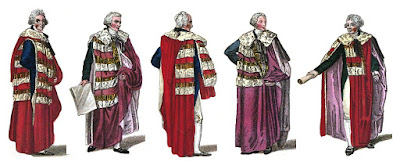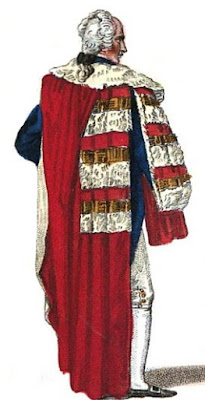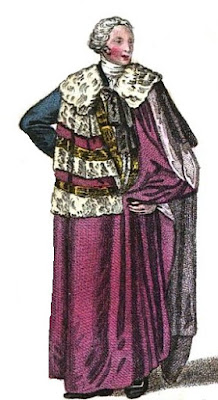Lady M is the story of Elizabeth Lamb, Viscountess Melbourne (1751-1818), a powerful and ambitious Georgian socialite and political hostess for the Whigs. Lady Melbourne is much less known than her son William Lamb, 2nd Viscount Melbourne, who became Prime Minister to William IV and Queen Victoria, or her intimate friend, Georgiana Cavendish, Duchess of Devonshire.
In Lady M, Brown paints a vivid picture of the powerful Lady Melbourne and the society in which she lived. I enjoyed reading this comprehensive biography but feel that it is let down by a number of errors and a poor index.
The ruthless Lady Melbourne
Having blogged about Lady Melbourne’s life back in 2013 (you can find the post here), I came to this biography with a good understanding of Lady Melbourne’s immoral and ruthlessly ambitious character. Brown’s book did nothing to change this.
Lady Melbourne’s identity is characterised by the way she related to the important people in her life – her husband, her children, her lovers and her intimate friends. Her desire for status over faithfulness is illustrated by her relationship with her husband – the weak and extravagant Sir Peniston Lamb. She was seemingly indifferent to his adulterous relationship with the actress Sophia Baddeley and remained ambitious to improve his – and therefore her own – rank and position.
Lady Melbourne had numerous lovers, most importantly George Wyndham, 3rd Earl of Egremont; George, Prince of Wales (the future George IV); and Francis Russell, 5th Duke of Bedford. She did not seem to give or require exclusivity.
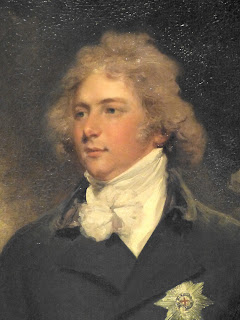 |
| George, Prince of Wales, by Hoppner © The Wallace Collection |
Her most enduring passion was for her children and she was severe on anything or anyone that threatened her ambitions for them. Her relationship with her daughter-in-law, Lady Caroline Lamb, was stormy. She was furious at Lady Caro’s lack of discretion in her affair with Lord Byron and how it threatened William’s political career.
What I liked about Lady M
I love to see quotes from original sources and in this, Brown did not disappoint. There is evidence throughout the book of Brown’s extensive research with numerous quotes from contemporary letters and memoirs, including some from manuscript sources in the Chatsworth Archives and the Lamb papers in the British Library.
There is a good-sized colour plate section in the middle of the book which includes some contemporary prints and portraits as well as up-to-date photographs of places connected with Lady Melbourne, including Brocket Hall in Hertfordshire, Melbourne Hall in Derbyshire and Melbourne House in Whitehall.
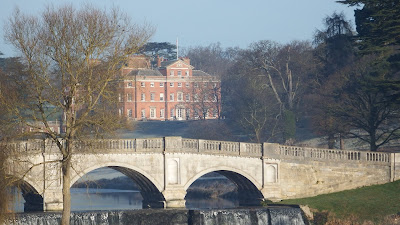 |
| Brocket Hall, Hertfordshire © Colin Brown |
Though I wasn’t surprised to learn of the Melbournes’ ongoing financial difficulties (so many Georgian peers seemed to struggle with money), I don’t think I realised the extent of this before reading Lady M.
The detail included in the chapter devoted to the military encampment on Cocks Heath was largely new to me. The encampment was visited by many ladies of consequence including Lady Melbourne, the Duchess of Devonshire and the scandalous Lady Worsley. It was here that Lady Melbourne’s son William was conceived with Lord Egremont.
Where’s the family tree?
I feel there are several things that let the book down. Although the contents section lists a family tree – a very useful tool for a historical biography – the family tree itself is missing!
A bevy of errors
It is a hard task writing a historical biography. Not only do you need to research the life of the chosen person; you also need to understand the world in which they lived and the myriad of people with whom they interacted. There is danger in almost every sentence. A throwaway comment or line written from memory may prove to be inaccurate if every single fact and name is not checked and double-checked.
I know how easy it is for errors to creep in during the editing stage and typos to pass unnoticed. If it was not for my editor spotting my typo in What Regency Women Did For Us, I would have had Jane Austen born in Stevenage instead of Steventon!
In my opinion, Lady M would have benefitted from a beta reader who is familiar with the characters and period. Too many errors crept into the manuscript that someone like me would have spotted (and did). It is not my intention to list every mistake I found. Some were clearly typos eg calling Lady Elizabeth Foster’s illegitimate daughter by the Duke of Devonshire Caroline St James instead of Caroline St Jules. Others, however, were not. I will mention a few.
Special licences
Lady Melbourne was married by special licence – not, as Brown says, because she was a minor, but because this enabled her to be married in the house of the Lord Bishop of Peterborough. A special licence was the only way to be married anywhere else other than the parish church. As a minor, she could have been married in the parish church by ordinary licence with her father’s consent or by banns if her father did not file an objection.
George III in Sidmouth?
Having written extensively about George III’s recuperation in my home town of Weymouth in Dorset (you can read about George III in Weymouth here), I was considerably surprised to read that the king went to Sidmouth in Devon instead! And though he certainly brought a good deal of popularity to Weymouth through his repeated visits, the king could hardly be said to have started the fashion for sea bathing there.
Titles
Writing a historical book about the aristocracy is always a tricky business as there are rules about titles and it is not easy to get them right. I recently re-researched the subject. You can find my blog post here: A Regency History guide to dukes, marquesses and other titles.
 |
| Peers (from left to right): duke, marquess, earl, viscount, baron from A book explaining the ranks and dignitaries of British Society (1809) |
I spotted a number of instances in Lady M where titles were used incorrectly. A person’s title should only include their Christian name if the title comes from their father. For example, when she was single, Lady Sarah Lennox was so called as she took her title from her father, the 2nd Duke of Richmond, but Lord Byron was a baron in his own right and should never be referred to as Lord George Gordon Byron.
It should also be noted that the wife of a duke should never referred to as Lady So and So, but always as the Duchess of So and So. For example, when talking about the Duchess of Richmond’s ball, the Duchess should not have been referred to as Charlotte, Lady Richmond, but as Charlotte, Duchess of Richmond, or Charlotte Lennox, Duchess of Richmond, or simply as the Duchess of Richmond (and her husband, the 4th Duke of Richmond, was called Charles, by the way, and not George – that was his father). Whilst getting titles right is not a deal breaker for most people, it is a detail that I like get right.
Poor indexing
In my opinion, for a historical biography to be useful as a reference book, it needs a comprehensive and easy-to-use index so that names of people and places can be easily looked up. Unfortunately, I found the index to Lady M sadly lacking.
Having written a historical book myself, I know how difficult it is to decide how to index names, especially when you are referring to the nobility whose titles may change over their lifetimes, but whatever policy is chosen, it is essential to apply it consistently with plenty of cross-references.
The naming policy in the index is all over the place. Sometimes a person is listed under their title eg Lady Oxford is listed under Oxford; other times under their surname eg Francis Russell, 5th Duke of Bedford, is listed under Russell. Bizarrely, sometimes a person is listed under their rank eg Frederick, Duke of York, is listed under Duke, or even, in the case of Georgiana Cavendish, Duchess of Devonshire, under her Christian name with no reference to her surname at all. George III is listed under King whilst Queen Victoria is listed under Victoria.
Some people appear in the index multiple times eg Lady Bessborough appears under Spencer, Ponsonby, Duncannon and Bessborough, whilst others you might have expected to find an entry for eg William Cavendish, 5th Duke of Devonshire, don’t appear to be there at all. I would have expected to find one entry for a person under either title or surname with cross-references under the other and previous titles if necessary eg I would have expected to find a ‘see Russell, Francis, 5th Duke of Bedford’ entry under Bedford.
This is also where the correct use of titles comes into play again. Several of the index entries incorrectly include Christian names in the title eg Lady Harriet Duncannon. The entry for George Wyndham, 3rd Earl of Egremont is even worse. He is incorrectly listed under Egremont as Lord George Egremont and there is no mention of his surname at all!
One final gripe. There is only one index entry for Lady Jersey, but there are two different Lady Jerseys referred to in the text – Sarah Child Villiers, Countess of Jersey and Patroness of Almack’s, and Frances Villiers, Countess of Jersey, her mother-in-law.
In summary
Lady M is a comprehensive biography but it is let down by a number of errors and a poor index.


